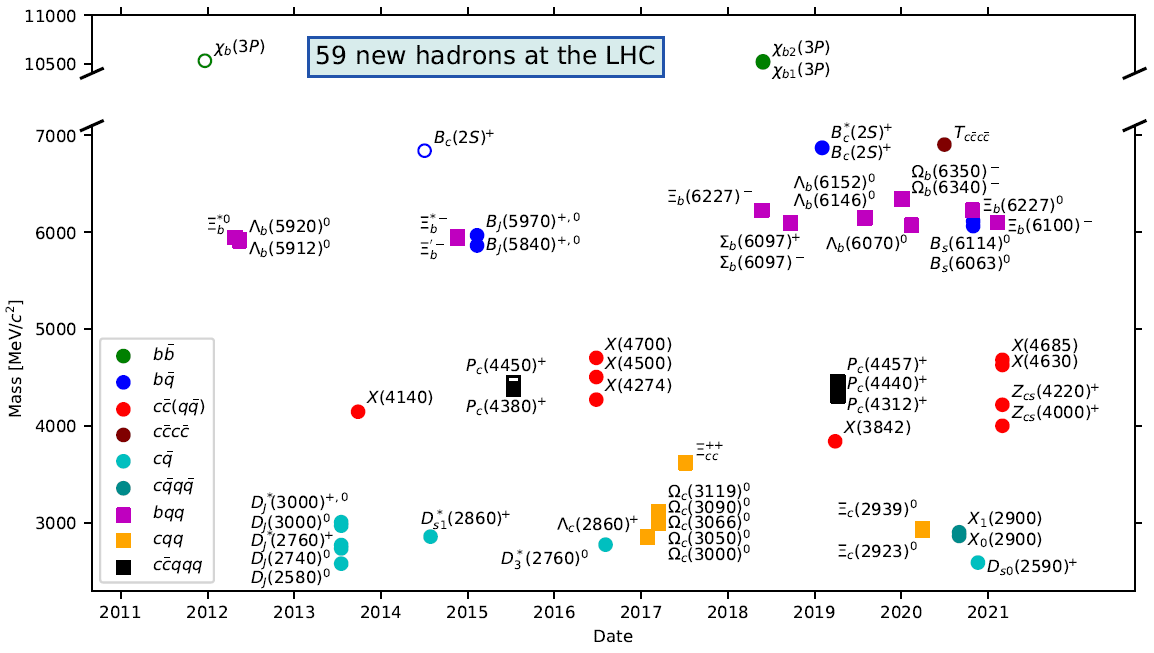The LHC, Large Hadron Collider, is a particle collider in which accelerated protons collide inside four large experiments. Hadrons (Greek: ἁδρός, hadrós, meaning “stout, thick”) are a class of particles which the protons belong to, explaining the origin of the word “hadron” in the name of the LHC. In the quark model hadrons are composed of two or more quarks bound by the strong force. They also interact strongly between themselves like in the nucleus of an atom. Hadrons composed of a quark-antiquark pair are called mesons, of three quarks are called baryons, and those composed of larger number of quarks, exotic hadrons.

A very large number of hadrons are produced at the LHC. The excellent LHC detectors are able to reconstruct them efficiently. All the new hadrons that have been discovered at the LHC are shown in the plot above. The colour of the symbol accompanying the hadron name indicates the particle quark content. The hadrons are classified as a function of their mass and year of discovery. In 11 years of LHC operation 59 hadrons have been discovered by the ATLAS, CMS and LHCb collaborations; on average nearly one every two months. Clearly, the LHC is a Large Hadron Discovery Factory. Details of many of the discoveries can be found in the specific news stories on this web page. The list of new particles discovered at the LHC is continuously maintained.
Hadrons discovered in the 1950 and 1960ies, the pioneering years in particle physics history, were called elementary particles till their structure was finally understood in the framework of quark model. The quark combinations can be in their lowest-energy quantum mechanical state: the ground state. Like electrons in atoms, the quarks can be rearranged into excited states with different values of angular momentum and quark spin orientation. Following the particle physics tradition all these quantum states are called hadrons and, more generally, particles.
Four more hadrons were added to the plot and the list today including ccus tetraquarks with hidden charm and open strangeness. The details of this discovery can be found in the accompanying news.
The first hadrons were discovered in cosmic rays and at low energy accelerators. Physicists were analysing practically by hand images of particle tracks recorded in bubble chambers and nuclear emulsions. Today modern technology allows physicist to discover a large number of hadrons with higher masses and sometimes astonishing properties by studying particle collisions at the very high LHC energy, using state of art detectors and fast computers. The discovery adventure continues. Follow it at this web page.
Read more in the CERN update in English and French, in the CERN Courier article and also in the Conversation article.
